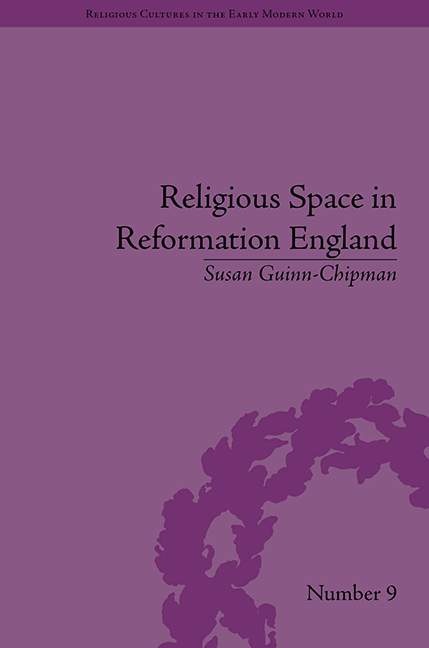Book contents
- Frontmatter
- CONTENTS
- Acknowledgements
- List of Figures
- Introduction
- 1 Dissolution and Adaptation: Religious Space in Henrician England
- 2 Radicalization and Response: Religious Space in Late Henrician and Edwardian England
- 3 Reframing the Parish Church in Marian and Elizabethan England: Cultural Adaptation in the Later Sixteenth Century
- 4 Contesting Religious Space: Alteration and Reaction in Stuart England
- Epilogue: The Persistence of Memory in Early Modern England: Mapping the Past
- Notes
- Works Cited
- Index
4 - Contesting Religious Space: Alteration and Reaction in Stuart England
- Frontmatter
- CONTENTS
- Acknowledgements
- List of Figures
- Introduction
- 1 Dissolution and Adaptation: Religious Space in Henrician England
- 2 Radicalization and Response: Religious Space in Late Henrician and Edwardian England
- 3 Reframing the Parish Church in Marian and Elizabethan England: Cultural Adaptation in the Later Sixteenth Century
- 4 Contesting Religious Space: Alteration and Reaction in Stuart England
- Epilogue: The Persistence of Memory in Early Modern England: Mapping the Past
- Notes
- Works Cited
- Index
Summary
The seeds of a religious movement that emphasized the formal qualities of beauty, uniformity and order planted in the later years of Elizabeth's reign took root under the Stuarts, gradually destabilizing the tentative balance that had been achieved in the decades following the Elizabethan Settlement. Richard Hooker, by 1591 serving as subdean of Salisbury, prebendary of Netheravon and rector at Boscombe, Wiltshire, had introduced the notion of worship ‘in the bewtie of holiness’, which would prove so influential in later Arminian thought. Experiments in the application of beauty to the physical space of parish churches and cathedrals conducted by future Archbishops William Laud and Richard Neile during the reign of James I were slowly embraced by Charles I. In the increasingly tense religious and political climate of the 1620s and 1630s, the symbolism attached to these qualities ignited debate that pitted Arminian notions of the holy against Calvinist or Puritan notions of purified space. The enforcement of an anti-Calvinist, Arminian doctrine of ‘restoration’, alternatively known as Laudianism, Carolinism or ceremonialism, created friction not only among ecclesiastical and political authorities as they debated the orthodoxy of newly altered parish church space but also among parishioners themselves.
The programme of beautification of parish church interiors drew mounting resistance in the years leading up to the Civil Wars, with the parish church functioning as an increasingly contested space.
- Type
- Chapter
- Information
- Religious Space in Reformation EnglandContesting the Past, pp. 95 - 122Publisher: Pickering & ChattoFirst published in: 2014



